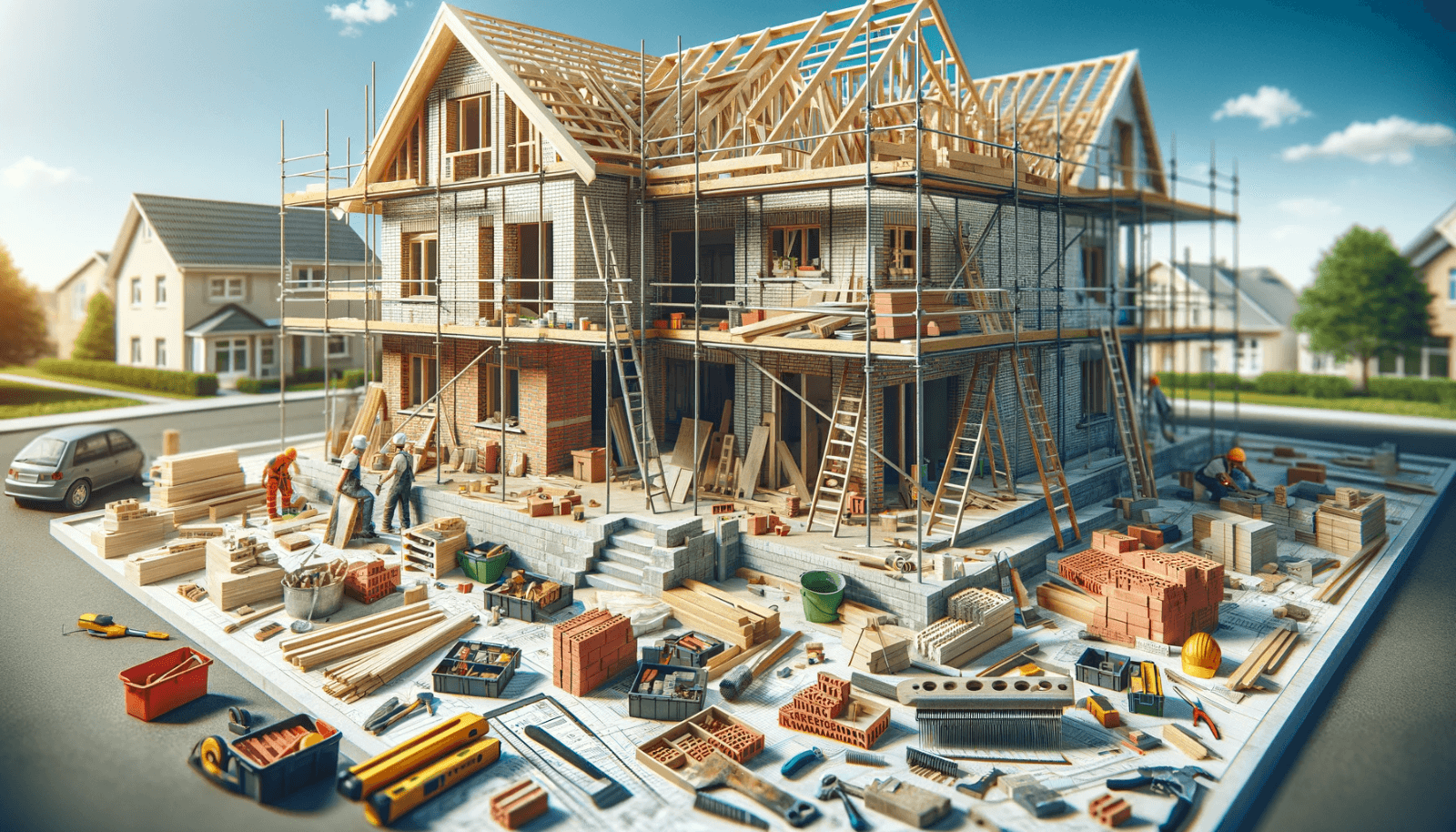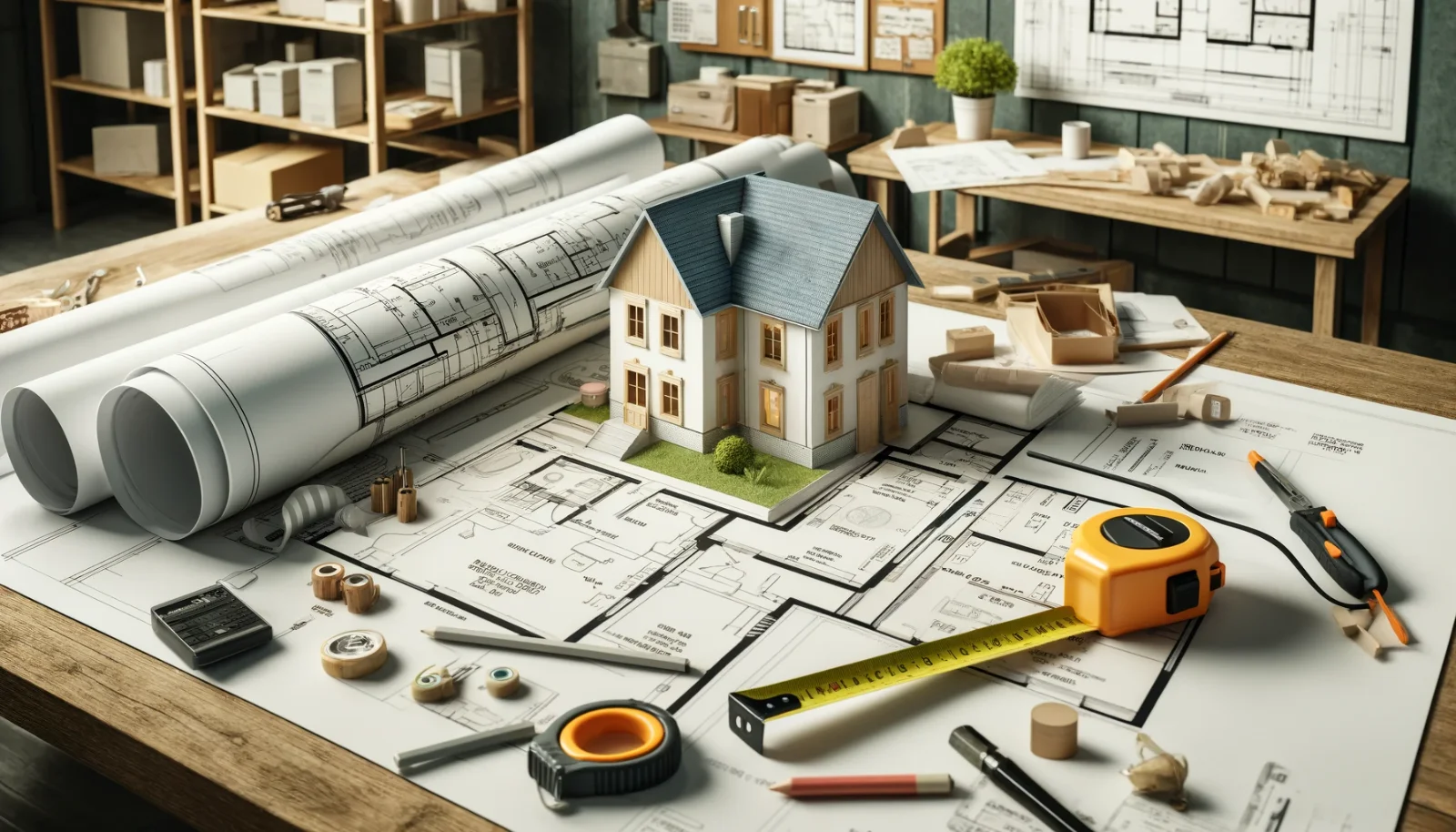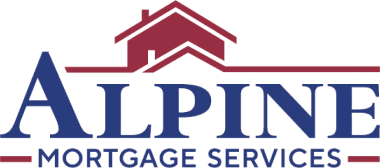Home Improvement & Renovation Loans
Ready to turn your house into your dream home? Whether you're a current homeowner looking to make upgrades or a first time homebuyer looking for a fixer upper, Alpine Mortgage has a variety of renovation loans, home improvement loans and rehab loans to help you achieve your goals.

Understanding Renovation Loans
Renovation loans are a convenient option for homeowners who don’t have the upfront cash for renovations. These loans allow you to borrow money specifically for remodeling or repairing your home so you can have the space you’ve always wanted without draining your savings account. There are various loan options, personal loans and home improvement loans to fit your needs and situation.
One of the most popular options for renovation financing is the FHA 203k loan, which is backed by the Federal Housing Administration (FHA) and offered by FHA 203K lenders. The FHA 203k loan allows borrowers to combine the cost of home purchase or refinance with the cost of renovations into one loan. This means that you can buy a home and start making the necessary improvements right away, all with one mortgage payment. Plus, FHA 203k loans offer flexible repayment terms and low down payment requirements. This makes them ideal for first time homebuyers and those with limited funds for a down payment.
Whether you're planning minor cosmetic updates or a major overhaul, renovation loans can help you turn your vision into reality. From kitchen remodels and bathroom renovations to new flooring and roof repairs, the possibilities are endless when it comes to transforming your home.
Types of Renovation Loans
Whether you're looking to update your kitchen, add a bedroom or completely rehab a fixer upper, securing the right financing is important. Let's explore various renovation loan options in more detail, including Renovation Loans, Home Improvement Loans and Rehab Loans.
FHA 203K Loans
FHA 203K loans are government backed loans that allow homebuyers and homeowners to finance both the purchase (or refinance) and the renovation of a home through a single mortgage. There are two types of FHA 203K loans:
Limited 203K (Streamline 203K)
- Designed for minor renovations and non-structural repairs.
- The maximum allowed renovation cost is $75,000.
- No minimum renovation cost requirement.
- Renovations must be completed within 6 months.
- No HUD consultant required.
- Eligible repairs include painting, fixtures, appliances, flooring, and minor remodeling.
Standard 203K
- Suitable for more extensive renovations, including structural repairs.
- No maximum renovation cost limit, but the total mortgage must fall within FHA lending limits.
- Minimum renovation cost of $5,000.
- Renovations must be completed within 6-12 months.
- Requires a HUD consultant to assess the property, create a detailed work plan, and oversee the renovation process.
- Eligible repairs include major structural alterations, room additions, landscaping, and energy-efficient upgrades.
FHA 203K Loan Requirements & Eligibility
- Available for primary residences only.
- Borrowers must have a minimum credit score of 580.
- Down payment of 3.5% for credit scores of 580 or higher
- Mortgage insurance is required.
- Contractors must be licensed and insured.
Fannie Mae Homestyle Renovation
The Fannie Mae HomeStyle Renovation loan is a conventional mortgage that allows borrowers to purchase or refinance a home and include the cost of renovations in the loan. This loan offers more flexibility compared to FHA 203K loans.
Key Features of HomeStyle Renovation Loans:
- Financing available for up to 75% of the home's "as-completed" appraised value.
- Loan can be used for primary residences, second homes, and investment properties.
- No restriction on the types of renovations, as long as they are permanently affixed and add value to the property.
- Renovations must be completed within 6-12 months.
- A contingency reserve of 10-15% of the total renovation cost is required.
- Contractors must be licensed and insured, with valid contracts and plans.
HomeStyle Renovation Requirements & Eligibility
- Available for primary residences, second homes, and investment properties.
- Minimum credit score of 620 (some lenders may require higher scores).
- Down payment of 5% or more, depending on the property type and borrower's credit score.
- Private mortgage insurance (PMI) required for loans with less than 20% down payment.
- Debt-to-income ratio should generally not exceed 45%.
Freddie Mac ChoiceRenovation
The Freddie Mac ChoiceRenovation loan is a single close mortgage that allows borrowers to purchase or refinance a home and include the cost of renovations in the loan. This loan is designed to help borrowers improve their homes and increase their value, with a focus on making homes more energy efficient, disaster resistant or accessible.
Key Features of ChoiceRenovation Loans:
- Financing available for up to 75% of the home's "as-completed" appraised value for primary residences.
- Loan can be used for primary residences, second homes, and investment properties.
- No restrictions on the types of renovations, as long as they are permanently affixed and add value to the property.
- Renovations must be completed within 12 months of closing.
- A contingency reserve of 10-20% of the total renovation cost is required, depending on the project type and borrower's credit score.
- Contractors must be licensed and insured, with valid contracts and plans.
ChoiceRenovation Requirements & Eligibility:
- Available for primary residences, second homes and investment properties.
- Minimum credit score of 620 (some lenders may require higher).
- Down payment of 5% or more, depending on the property type and borrower's credit score.
- Private mortgage insurance (PMI) required for loans with less than 20% down payment.
- Debt-to-income ratio should generally not exceed 45%.
Unique Features of ChoiceRenovation Loans:
- Energy efficient upgrades: ChoiceRenovation loans encourage borrowers to make energy efficient improvements such as installing solar panels, energy efficient windows or high-efficiency HVAC systems. These upgrades can lead to lower utility bills and may qualify for tax credits.
- Disaster resistant improvements: Borrowers in areas prone to natural disasters can use ChoiceRenovation loans to make their homes more resilient. This includes installing storm shutters, reinforcing roofs or elevating the home to protect against flooding.
- Accessibility modifications: ChoiceRenovation loans can be used to make homes more accessible for people with disabilities or age related needs. This may include installing ramps, widening doorways or modifying bathrooms.
Comparing ChoiceRenovation to Other Renovation Loans:
- Like FHA 203K and Fannie Mae HomeStyle loans, ChoiceRenovation loans allow borrowers to finance home purchases and renovations with a single mortgage.
- ChoiceRenovation loans have a longer renovation completion timeline (12 months) compared to FHA 203K and HomeStyle loans.
- ChoiceRenovation loans emphasize energy efficient, disaster resistant and accessibility improvements, which may not be a primary focus of other renovation loan programs.
Other Options
Home Equity Loans. A home equity loan is a conventional method to finance renovations by borrowing against the equity you have built up in your home. This loan provides a lump sum payment and has fixed interest rates.
Cash Out Refinance. A cash out refinance involves refinancing your existing mortgage and taking out additional funds for renovations. This can be a good option if you can get a lower interest rate than your current mortgage.
Comparing Interest Rates and Loan Terms
Renovation loans and home improvement financing have different interest rates and terms. These can add up to a big difference in your project cost. Rates are based on your credit score and economic factors. So research and possibly consult with a financial advisor to get the best rates and terms.

Understanding the Application Process for Renovation Loans
The application process for renovation loans generally involves the following steps:
- Prequalification: Understand how much you can borrow by providing basic financial information to your lender. This step helps you determine your budget for the renovation.
- Documentation: Submit necessary documents, such as proof of income, employment verification, and details about the property. You may also need to provide plans and estimates for the renovation work.
- Appraisal: A home appraisal may be necessary to assess the current value of the home and the projected value post-renovation. This step ensures the property will be worth the amount you're borrowing once the work is completed.
- Approval and Closing: Once your loan is approved, you'll go through the closing process, where the loan terms are finalized, and funds are disbursed. For some loans, funds may be released in stages as work is completed.
Tips for a Successful Renovation Loan Application
- Maintain a Good Credit Score: A higher credit score can help you secure better interest rates and loan terms.
- Save for a Down Payment: While some renovation loans require a low down payment, having funds available can improve your chances of approval and reduce your overall loan amount.
- Work with Licensed Contractors: Many lenders require that renovations be completed by licensed and insured professionals. Choose contractors with a good reputation and experience in the type of work you need.
- Prepare a Detailed Plan: Outline your renovation goals, budget, and timeline. Provide detailed estimates and plans to your lender to show that you have a clear vision and realistic expectations for the renovation project.
How to Get Preapproved for a Renovation Loan
Getting pre-approved for a renovation loan is quick and easy with our online Loan Application. After completing the application, you will receive instructions on how to upload your documents. For a list of documents you will need to upload, see our Pre-approval Document Checklist.
Understanding the different types of renovation loans and their specific requirements can help you choose the right option for your next home improvement project. By comparing different loan options and understanding the application process, you can make informed decisions and navigate the path to a successfully financed renovation. It's essential to consult with a knowledgeable lender to discuss your specific situation and determine the best renovation loan option for your needs. At Alpine Mortgage, our experienced loan specialists can guide you through the process and help you unlock your home's potential. We offer home renovation loans in California, Colorado, Connecticut, Florida, Georgia, New Jersey, New York, Ohio, Pennsylvania and Texas.
Contact us today at (800) 876-5626 to learn more about our renovation loan programs or click here to have one of our renovation loan specialists contact you.
If you would like to apply for a renovation loan, you can apply online now.
Renovation Loans FAQs
Most renovation loans require that the work be completed by a licensed and insured contractor, although the limited FHA 203K may allow for DIY in some cases.
Yes, most renovation loans have specific guidelines on what other home improvement projects can be financed. Generally, improvements must be permanent and add value to the home.
Typically, renovations must be completed within 6 to 12 months after the loan closing.
This depends on the loan type. For example, FHA 203K loans are generally more restrictive and prioritize essential repairs and upgrades, while HomeStyle Renovation loans offer more flexibility for luxury improvements.
Most renovation loans include a contingency reserve that can be used in the event that the renovation goes over budget.
If you are looking to do build a house from ground up, see our Construction Loans.
Renovation Loan Resources
- FHA 203(k) Loans
- Fannie Mae HomeStyle Renovation Loans
- Freddie Mac ChoiceRenovation Loans
- Construction Loans
Additional Renovation Resources
- HUD's FHA 203K Loan Program: Visit the HUD website for detailed information on the FHA 203K loan program, including eligibility requirements and application steps.
- Fannie Mae HomeStyle Renovation: Explore Fannie Mae's website for comprehensive details on the HomeStyle Renovation loan.
- Freddie Mac ChoiceRenovation: Learn more about Freddie Mac’s ChoiceRenovation loan on their official site.
Get a Quick Quote
"*" indicates required fields
